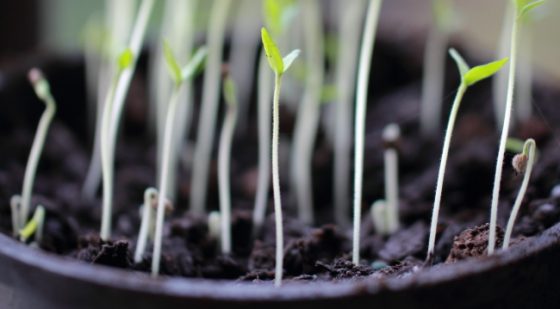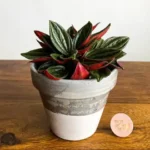Understanding the Problem: What Does It Mean When a Plant is Leggy?
Have you ever noticed one of your once bushy houseplants becoming stretched out, sparse, and floppy, with long stems and fewer leaves? If so, your plant has likely become “leggy.” A leggy plant has elongated stems and a top-heavy appearance, often looking weak or unbalanced. While legginess doesn’t necessarily mean your plant is dying, it’s a clear sign that it’s not thriving either.
Legginess is a common issue, particularly for indoor plant lovers. But the good news is that it’s entirely preventable and fixable with some changes in care practices. In this guide, we’ll explore what causes plants to become leggy and share practical steps to help restore their compact and healthy shape.
Main Causes of Leggy Growth in Houseplants
To prevent or correct legginess, it helps to understand its root causes. Here are the most common culprits behind leggy growth:
1. Inadequate Light
By far the most common cause of leggy indoor plants is insufficient light. Plants use light to photosynthesize and produce energy. When light is inadequate, a plant will naturally stretch toward the closest light source, leading to long internodes (the spaces between leaves) and weak growth.
Common signs of light deficiency include:
- Plant leaning or growing toward a window
- Wide gaps between leaves
- Pale or smaller new growth
2. Seasonal Changes
During fall and winter, natural light levels drop, and the sun is lower in the sky. Even plants that thrived during summer may start to stretch if they aren’t getting enough light during the darker months. Growth naturally slows in winter, but legginess occurs when a plant tries to grow with inadequate light supply.
3. Over-Fertilizing
Excessive use of fertilizers, especially high-nitrogen types, can lead to fast but weak and stretched growth. While it’s tempting to feed your plants often, too much fertilizer stimulates soft, tall shoots without the structural strength or foliage density to support them.
4. Crowded or Improper Pruning
Without regular pruning, some plants tend to focus their energy upward, resulting in tall but sparsely leafed stems. Also, if a plant is crowded with others, it may compete for light and grow tall and leggy as it tries to outgrow its neighbors.
How to Fix Leggy Plants
Once you’ve identified leggy growth in your houseplants, the next step is to take corrective action. Here are practical tips to restore your plants to their lush, compact glory:
1. Improve Lighting Conditions
This is the most effective fix for leggy plants. Every plant species has its own light preferences, so it’s important to match their needs. Here’s how you can improve lighting:
- Move closer to a window: East- and south-facing windows offer the best light for most popular houseplants.
- Supplement with grow lights: In dark rooms or winter months, use full-spectrum LED grow lights to ensure consistent lighting.
- Rotate your plant regularly: Turn your plant every week to ensure even light exposure and prevent it from leaning toward one side.
Pro Tip: For plants like succulents, herbs, and flowering varieties, bright light for at least 6 hours a day is ideal. Foliage plants like pothos and peace lilies can tolerate lower light but still need bright indirect light to grow compactly.
2. Prune Strategically
Pruning helps control the height of leggy plants and encourages bushier growth from the base and sides. When done properly, pruning stimulates new branches and balances the plant’s shape.
- Use sharp, sterilized scissors or pruning shears.
- Cut just above a leaf node (the point on the stem where a leaf is attached).
- Remove excessively long stems or those that aren’t producing healthy leaves.
After pruning, your plant may look smaller, but don’t worry—it will soon reward you with fuller growth.
3. Pinch Back Growth Regularly
Pinching is a gentler form of pruning best suited for herbs, coleus, and other soft-stemmed plants. Simply use your fingers to pinch off the tip of a growing stem to encourage two new branches to form. This helps the plant become bushier over time.
4. Optimize Fertilizer Use
If you’ve been overfeeding your plants, back off on the fertilizer. As a general rule:
- Use a balanced liquid fertilizer diluted to half strength during the active growing season (spring–summer).
- Avoid feeding plants in winter when growth slows down naturally.
- Choose slow-release fertilizers for a more consistent nutrient supply.
5. Repot or Divide When Needed
If your plant has outgrown its container, the roots may be crowded, leading to poor nutrient and water absorption. This can affect leaf development and encourage legginess. Look for signs like roots growing out of the drainage holes or sluggish growth even with good care.
Repot into a container 1–2 inches larger than the current one, using fresh, appropriate soil. Alternatively, divide plants like spider plants or ZZ plants to refresh growth.
Preventing Leggy Growth From the Start
It’s always easier to prevent legginess than to fix it. Whether you’re growing trailing vines, leafy tropicals, or bushy herbs, here are key tips to encourage healthy, compact growth from the beginning:
- Choose light-loving locations: Keep light in mind when choosing where to place a plant. A bright, indirect spot near a window is ideal for many indoor species.
- Maintain a regular pruning schedule: Pruning isn’t only for repair—it can be part of healthy plant grooming that keeps your plants in top shape.
- Group plants strategically: Avoid overcrowding plants so they don’t have to compete for light and airflow.
- Watch for seasonal adjustments: Expect growth patterns to change with the seasons. Move light-hungry plants closer to windows during winter or add supplemental lighting as needed.
- Rotate regularly: Give all sides equal sun exposure to promote symmetrical growth.
Conclusion
While leggy plants may seem like an eyesore or a frustrating problem, remember that it’s a natural response to specific care conditions—most frequently, a lack of light. By paying attention to your plant’s environment and making a few strategic changes, you can encourage lush, healthy, and attractive growth.
Whether it’s repositioning for better light, pruning back overgrown stems, or reducing fertilizer, your plants can bounce back beautifully. Remember, gardening—even indoors—is a learning process. With these tips in mind, you’ll be better equipped to identify why your green friends are looking leggy and how to help them grow strong and full once more.
References
- Gilman, E. F. (1997). How to Prune Trees. U.S. Department of Agriculture, Forest Service.
- Stewart, J. (2017). The Indoor Plant Bible. Firefly Books.
- Hessayon, D. G. (2003). The House Plant Expert. Expert Books.








